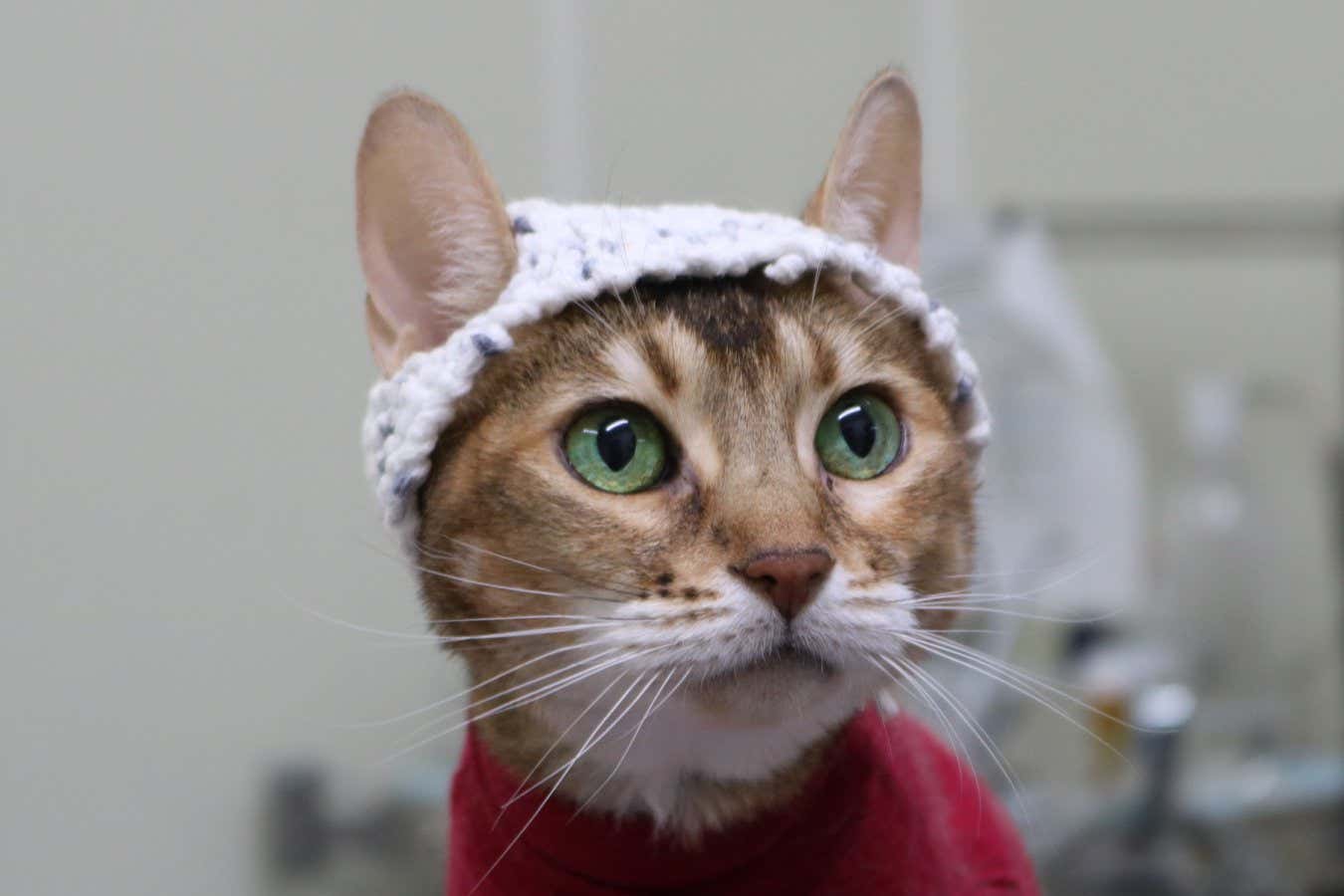Scientists have recorded electrical activity in the brains of awake cats for the first time, thanks to specially crocheted wool caps that hold the electrodes in place.
The technique gives researchers a way to assess chronic pain in cats and could lead to novel treatments, says Aude Castel at the University of Montreal in Canada.
About a quarter of all adult cats live with chronic pain due to osteoarthritis, which gets worse with age. Because treatment options are limited and generally involve significant side effects, Castel and her colleagues have been seeking alternative ways to relieve pain in cats, such as aromatherapy.
Electroencephalograms (EEGs) can be helpful in assessing the effects of such treatments because they can show the brain’s responses to pain and to stimulation of the senses. Thus far, though, the only EEGs carried out in cats have been performed in sedated animals.
Castel and her colleagues attempted to place electrodes on the heads of 11 awake, adult cats – all of which had osteoarthritis – in order to record their brain activity in response to smelling a variety of substances and seeing different wavelengths of light. However, the cats regularly shook their heads, causing the electrodes to shift out of place or fall off. Finally, the researchers realised they could take advantage of a new fashion for cats: crocheted caps.
“When you spend more time putting electrodes back on than you do actually recording the EEGs, you get creative,” says team member Aliénor Delsart, also at the University of Montreal.
The team asked a graduate student to crochet special cat caps to hold the electrodes, inspired by a tutorial on YouTube. With the new hats in place, the researchers found that the electrodes stayed in position and that the cats no longer tried to play with or chew the wires.
The EEG recordings in the awake cats were mostly usable, although a few still had too much interference from the cats’ head movements. Even so, the results allowed the team to determine critical brain activity related to the cats’ pain levels and reactions to various smells and coloured lighting.
As such, the team plans to use the EEG caps in future studies to determine how various treatments – including drugs and alternative therapies like odours and lighting – affect the cats’ perception of pain, says Delsart.
Journal reference:
Journal of Neuroscience Methods DOI: 10.1016/j.jneumeth.2024.110254
Source: Cats have brain activity recorded with the help of crocheted hats | New Scientist

Robin Edgar
Organisational Structures | Technology and Science | Military, IT and Lifestyle consultancy | Social, Broadcast & Cross Media | Flying aircraft
